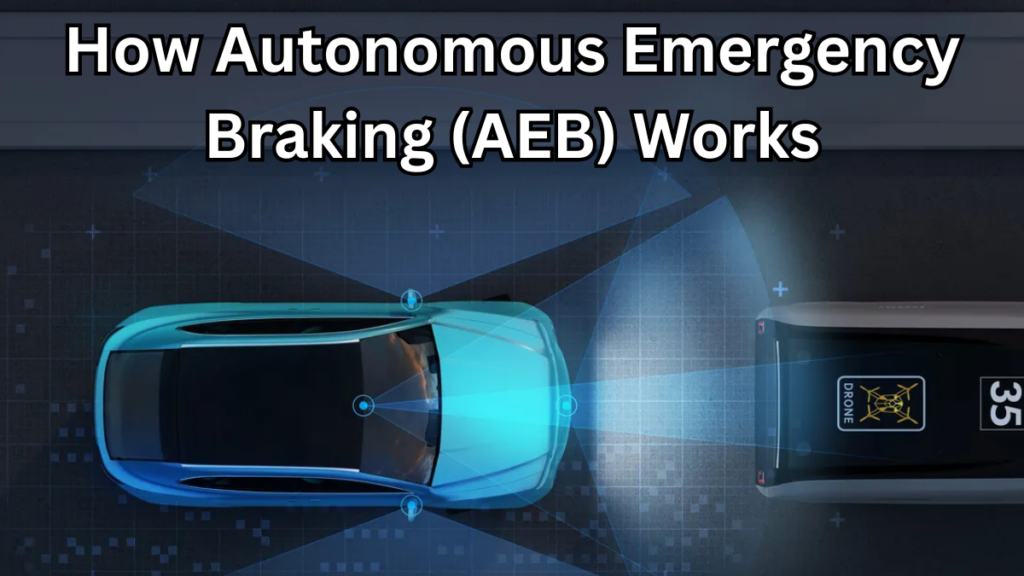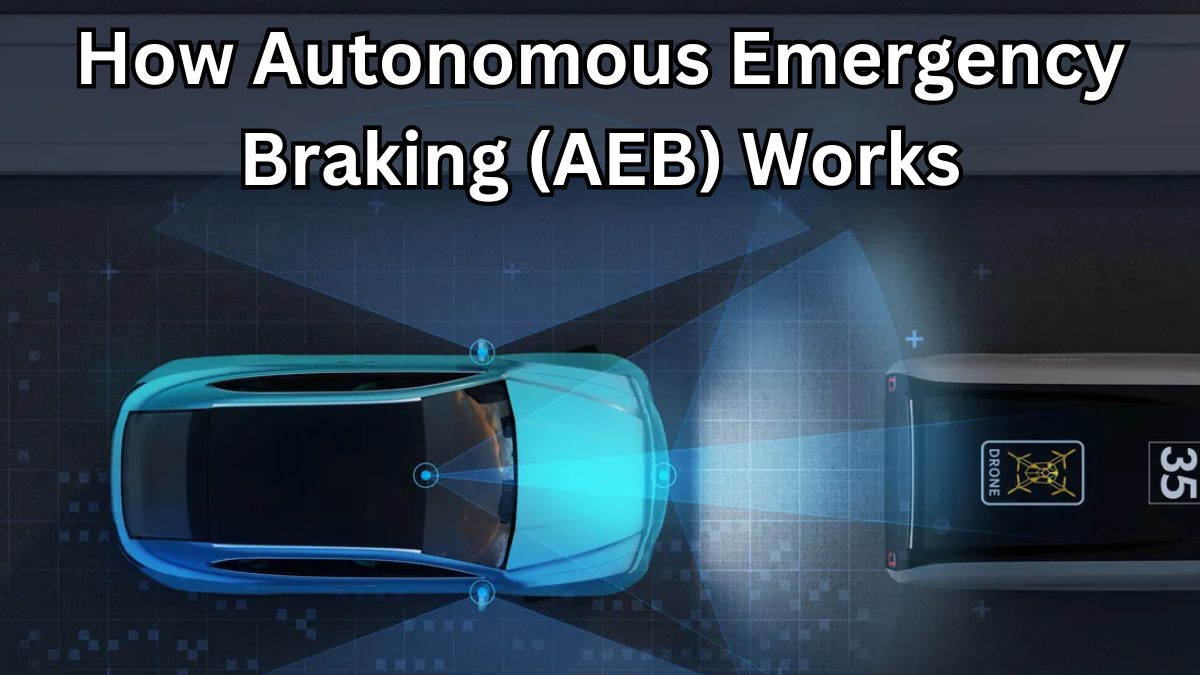In today’s fast-evolving landscape of safety innovations, car technology has advanced significantly to prioritize the safety of both drivers and pedestrians. One such advancement that stands out is Autonomous Emergency Braking (AEB). But what exactly is it, and why is it becoming an essential feature in modern vehicles?
Let’s break it down into something practical and easy to understand.

What is Autonomous Emergency Braking (AEB)? – AEB Explained
Autonomous Emergency Braking (AEB) is a proactive safety system that helps prevent or reduce the severity of accidents. It automatically applies the brakes when it detects an imminent collision, and the driver hasn’t responded in time.
AEB explained in everyday language:
Think of it as your car’s sixth sense. When a sudden danger appears ahead—such as a car abruptly stopping or a pedestrian stepping into the road—your car can brake on its own to avoid or lessen the impact.
How Does AEB Work?
AEB systems rely on a combination of smart sensors, radars, and cameras to monitor the environment ahead of the vehicle.
| Component | Function |
|---|---|
| Forward-Facing Radar | Detects objects in front of the car and measures distance and speed |
| Cameras | Identifies people, vehicles, and obstacles using visual data |
| Lidar (in some cars) | Uses light detection to build a detailed picture of the surroundings |
| Control Unit | Processes sensor data and decides when to trigger emergency braking |
| Braking System | Applies the brakes automatically if a crash is likely |
Detection and Monitoring
The system constantly scans the road for obstacles and changes in traffic flow.
Collision Risk Assessment
If the system identifies a potential collision, it alerts the driver with warnings—visual, audio, or even vibration.
Automatic Braking
When the driver doesn’t act in time, the AEB system steps in and applies the brakes automatically to:
-
Avoid a crash (especially at lower speeds)
-
Reduce the force of impact in higher-speed situations
Why AEB Matters: Real-Life Benefits
This feature isn’t just about high-tech convenience—it’s about saving lives and making roads safer. Here’s why AEB is such a vital part of today’s car braking systems:
-
Reduces Rear-End Collisions
-
Protects Vulnerable Road Users like pedestrians and cyclists
-
Increases Reaction Time by acting faster than humans can
-
Adds Confidence for nervous or elderly drivers
-
Supports Safer Roads overall with fewer severe accidents
AEB and Car Braking Systems: A Perfect Match
AEB is part of a larger ecosystem of car braking systems. Together with older and newer technologies, it creates a multi-layered safety approach.
| Braking System | Description |
|---|---|
| Manual Brakes | Driver must apply brakes themselves |
| ABS (Anti-lock Braking System) | Prevents wheel lock-up during hard braking |
| AEB (Autonomous Emergency Braking) | Automatically brakes if a crash is imminent |
Each system complements the other, offering increased control and added safety.
The Future of Safety Innovations
As automakers push boundaries in safety innovations, AEB is a foundational piece of the road to semi-autonomous and autonomous driving. Here’s what’s next:
-
Enhanced low-light and night-time object detection
-
Improved cyclist and pedestrian recognition
-
Wider adoption across all vehicle classes, including commercial vehicles
-
Integration with vehicle-to-vehicle communication systems
These improvements are leading us toward safer, more intelligent roads where fewer accidents occur—even when human error is involved.
FAQs About Autonomous Emergency Braking (AEB)
1. Is AEB standard in all new cars?
No, not yet. While many manufacturers are now including AEB in new vehicles, it’s not universal across all models. However, safety regulations are pushing towards making it a mandatory feature.
2. Does AEB completely take over from the driver?
No. AEB is designed to assist, not replace, the driver. It only intervenes when there’s a clear risk and the driver hasn’t responded in time.
3. Can AEB work in bad weather?
Extreme conditions like heavy snow or rain may reduce the system’s effectiveness due to sensor obstruction. However, technology is improving to make AEB more reliable in all conditions.
4. Is AEB considered part of the car braking systems?
Yes, AEB is integrated into modern car braking systems, working alongside manual braking and ABS for a complete safety solution.
Final Thoughts
As the world embraces smarter and safer driving, AEB explained simply means one thing: fewer crashes and more peace of mind. It’s one of the most valuable safety innovations of the modern automotive era, making roads safer not just for drivers—but for everyone.
If you’re considering a new car, look for models equipped with Autonomous Emergency Braking. It could be the feature that makes all the difference in a critical moment.
Click here to learn more
